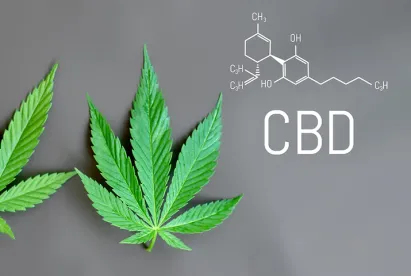FDA warning letters are nothing new in the cannabis industry. In fact, we here at Budding Trends have covered this topic a number of times (here, here, and here). Not resigned to playing the hits, however, the FDA issued a new set of warning letters on November 21 that may signal a shift in enforcement posture away from solely targeting companies that market CBD as a potential medical treatment and towards including companies that market their products in ways that could cause consumer confusion. This is a “Warning Sign” that might cause the cannabis industry “A Rush of Blood to the Head,” much like Coldplay’s multi-platinum album that recently celebrated its 20-year anniversary. So, turn back the “Clocks,” book your flight to “Amsterdam,” and indulge us if you will — just not too much.
Congress legalized the production of hemp and hemp-derived products under the 2018 Farm Bill. But federal legalization did not exempt the hemp industry from federal regulation. Indeed, the FDA and FTC retain overlapping enforcement authority over CBD marketing, with the FDA having primary authority over labeling. Far more than “A Whisper,” the FDA and FTC have not been shy about issuing warning letters to hemp companies that fail to follow the FDA’s labeling requirements and guidance.
Since its first set of warning letters to CBD companies in April 2019, the FDA has focused its enforcement activity on companies that market their CBD products as treatment and cures for a variety of diseases and illnesses. But the FDA’s most recent warning letters took a different tack, focusing on potential health risks from long-term CBD use, consumer confusion leading to unintentional or overconsumption of CBD, and CBD products that could be seen as marketed to children.
The basis of the FDA’s five new warning letters was that CBD is neither an authorized food additive nor generally recognized as safe. The FDA noted it had “not found adequate information showing how much CBD can be consumed, and for how long, before causing harm,” and claimed that “scientific studies show” potential harm to the “male reproductive system” and “liver” from long-term CBD use. In the FDA’s words, “[p]eople should be aware of the potential risks associated with the use of CBD products.”
The products highlighted in the warning letters included gummies, fruit snacks, lollipops, cookies, teas, and other beverages. The FDA said these products were targeted because consumers may confuse them for traditional foods or beverages, “which may result in unintentional consumption of overconsumption of CBD.” Further, the FDA noted that gummies, candies, and cookies are especially concerning because they may appeal to children. Likewise, the FDA cited tea, coffee, sparkling water, beverage “shots,” and honey as products similar to traditional food that may confuse consumers into over-consuming CBD.
Keeping its focus on unintended consumption or unintended overconsumption, the FDA also chastised one company for failing to specifically list CBD as an ingredient on the label of its hemp-infused tea. This is particularly important to note for hemp companies, many of which have sought to avoid listing “CBD” on the product labels for full spectrum hemp extracts in an effort to avoid the FDA and FTC’s seemingly CBD-focused enforcement actions.
Given this new enforcement posture, CBD companies may consider avoiding marketing attempts that seek to link CBD products too closely with traditional foods and beverages. This may include limiting references to the similarity of CBD products to traditional ones. And CBD companies should continue to avoid product labels and marketing campaigns that would be enticing to children, especially for CBD products that are in a form children might be likely to consume (such as gummies and candies).
It remains to be seen where the FDA will draw the line between appropriate marketing and marketing that goes too far towards confusing consumers, but, aside from a falsetto Chris Martin, “nobody said it was easy.” Until then, watch this space and remember to follow the marketing dos and don’ts we provided in one of our previous blog posts.





 />i
/>i

